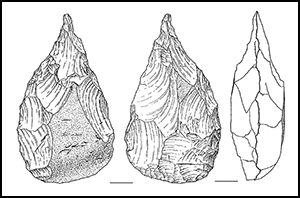No CrossRef data available.
Published online by Cambridge University Press: 15 September 2016

Is the Middle Palaeolithic an appropriate concept in eastern Asia? The issue has been debated for China in two recent papers in Antiquity (Yee 2012; Li 2014), which in turn responded to an earlier argument set out by Gao and Norton (2002). But does the Korean record offer a different perspective? Here, the authors argue that Korean archaeology, as with the Chinese record, provides no support for a distinct Middle Palaeolithic. Rather than seeking to validate an inappropriate chronological framework derived from European Palaeolithic research, emphasis should instead be placed on developing a regionally specific model of prehistory for eastern Asia. They conclude, akin to Gao and Norton (2002), that the East Asian Palaeolithic should be divided into two major cultural periods: Early and Late.